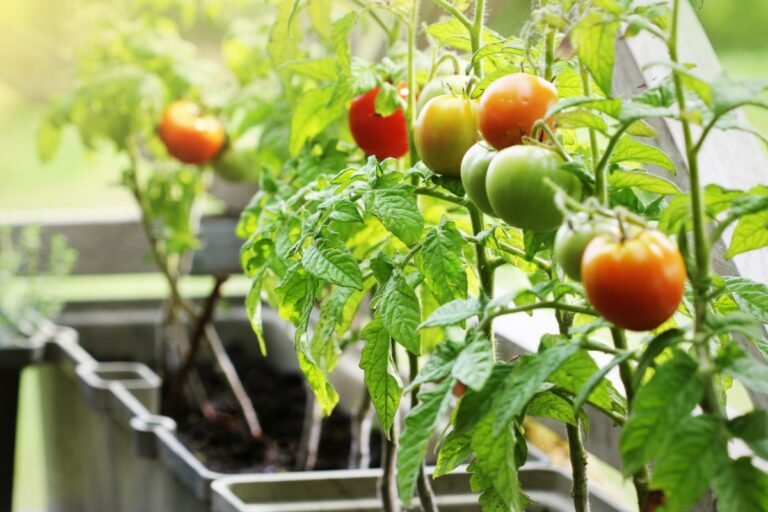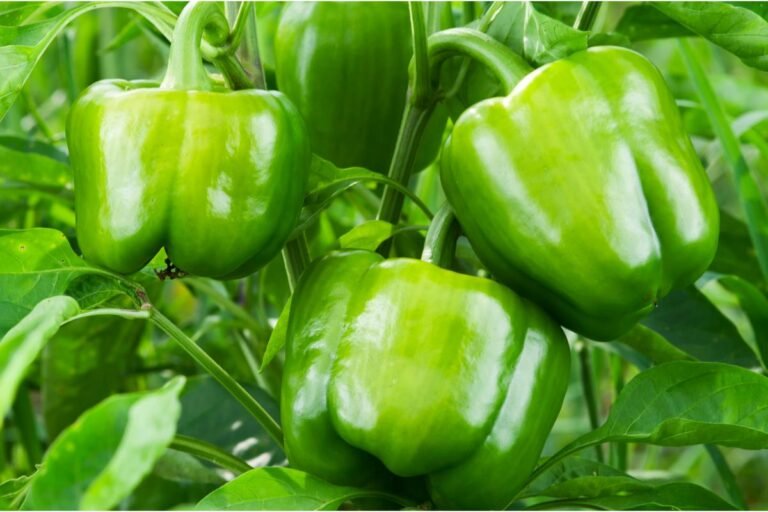Growing Kohlrabi in Containers: A Comprehensive Guide
Kohlrabi, a lesser-known vegetable that is a member of the brassica family, has gained popularity among gardeners in recent years due to its unique flavor and nutritional benefits. If you have limited space, growing kohlrabi in containers is an excellent choice. With the right variety, container, and care, you can enjoy a munificent harvest of this useful vegetable.
Kohlrabi Varieties for Containers
There are several kohlrabi varieties suitable for container gardening, each with its own characteristics and growth patterns. Here are some popular options:
Kossak Hybrid Kohlrabi
Known for its impressive size, this giant kohlrabi variety produces large bulbs that can weigh up to 10 pounds. Kossak kohlrabi seeds are widely available and suitable for container growing.
Early Purple Vienna Kohlrabi
A popular purple kohlrabi variety, this plant matures quickly and has a sweet, mild flavor.
White Vienna Kohlrabi
Another early maturing variety, the White Vienna produces pale green bulbs with a tender, crisp texture.
Grand Duke Kohlrabi
An award-winning variety, the Grand Duke produces large, smooth bulbs with a sweet, nutty flavor.
Growing Kohlrabi in Containers – Step by Step Procedure
Selecting and Preparing Containers for Kohlrabi
When growing kohlrabi in containers, it is essential to choose the right size and type of container. A 12- to 18-inch diameter pot or planter with a depth of at least 12 inches is ideal. For the purpose of avoiding waterlogging and root rot, make sure the container contains drainage holes.
A top-notch, well-draining potting mix should be used to fill the container. Avoid using garden soil, as it can become compressed and deter root growth. Add organic compost or slow-release fertilizer to provide the necessary nutrients for healthy kohlrabi growth.
Planting Kohlrabi Seeds and Seedlings
Kohlrabi can be started from seeds or transplanted seedlings. If starting from seeds, sow them directly in the container, spacing them about 3 inches apart and 1/4 inch deep. Once the seedlings have two sets of actual leaves, thin them to a final distance of 6 inches.
Alternatively, you can transplant seedlings purchased from a nursery or grown indoors. Gently take out the seedlings from their initial container, so that the roots may not damage. Plant the seedlings in the prepared container, spacing them 6 inches apart.
Caring for Container-Grown Kohlrabi
Proper care is essential for successful container kohlrabi growth. Keep the following factors in mind:
Watering
Maintain a constant moisture level in the soil that is not wet. Water the plants when you can feel the top inch of soil is dry. Checking the soil frequently is important because plants grown in containers require more frequent watering than plants planted in the ground.
Sunlight
Full light is ideal for kohlrabi, but it can also tolerate little shade. Aim to provide your container-grown kohlrabi with at least six hours of sunlight per day. If necessary, move the container to a sunnier spot or consider using grow lights.
Fertilizing
Kohlrabi is a heavy feeder, requiring adequate nutrients for optimal growth. During the growing season, add a water-soluble fertiliser every two weeks as a complement to the balanced, slow-release fertiliser you used at planting time.
Kohlrabi Diseases and Pests
Growing kohlrabi in containers can be a pleasing experience, but it’s crucial to be aware of the diseases and pests that can affect your plants. By understanding the common issues that kohlrabi may encounter, you can implement prevention and control strategies to ensure a healthy, bountiful harvest.
Common Kohlrabi Diseases
Several diseases can affect kohlrabi, including:
Clubroot
This soil-borne disease causes swollen, deformed roots and wilting leaves. To avoid clubroot, practice crop rotation and avoid overwatering. If your kohlrabi plants are affected, remove and dispose of them properly, and sterilize the container and soil before replanting.
Blackleg
This fungal disease results in dark spots on leaves and stems, eventually causing the plant to collapse. To prevent blackleg, use disease-free seeds and maintain suitable air passage around the plants. If you observe signs of blackleg, remove the affected plants and throw them out from the garden.
Downy Mildew
Downy mildew causes yellow spots on the leaves, which eventually turn brown and may be accompanied by a white, fuzzy growth on the underside of the leaves. To prevent downy mildew, ensure proper air circulation, avoid overhead watering, and maintain healthy plants. If your kohlrabi is affected, remove and dispose of the infected leaves, and apply a fungicide as needed.
Common Kohlrabi Pests
Kohlrabi is susceptible to various pests, including:
Aphids
These small, sap-sucking insects can cause curled, yellow leaves and may transmit viruses. To control aphids, introduce beneficial insects like ladybugs and lacewings, or apply insecticidal soap or neem oil.
Cabbage Worms
Cabbage worms are green caterpillars that feed on kohlrabi leaves, leaving large holes and damaged foliage. To control cabbage worms, handpick them from the plants, use floating row covers, or apply Bacillus thuringiensis (Bt) as a biological control.
Flea Beetles
These small, jumping insects chew tiny holes in kohlrabi leaves. Control flea beetles by using floating row covers, applying diatomaceous earth around the base of the plants, or using insecticides as needed.
Root-Knot Nematodes
These microscopic worms attack the roots of kohlrabi plants, causing stunted growth and reduced yields. To control root-knot nematodes, practice crop rotation, and use resistant varieties or soil solarization.
Prevention and Control Strategies
Implementing prevention and control strategies can help protect your kohlrabi plants from diseases and pests:
• Practice crop rotation to minimize the buildup of diseases in the soil.
• Use disease-free seeds and transplants.
• Ensure proper air circulation, water management, and hygiene in your garden.
• Introduce beneficial insects and utilize organic pest control methods.
• Monitor your plants regularly for signs of disease or pests, and take prompt action when needed.
Kohlrabi Companion Plants for Pest Control
Companion planting can be an effective strategy for deterring pests and promoting healthy plant growth. Some suitable companion plants for kohlrabi include:
Marigolds
These vibrant flowers can repel various pests, including root-knot nematodes and flea beetles. Plant marigolds near your kohlrabi to create a natural barrier against these pests.
Nasturtiums
Nasturtiums can help deter aphids and whiteflies, making them a valuable addition to your kohlrabi garden.
Garlic and Onions
Planting garlic and onions around your kohlrabi can help repel pests like cabbage worms and flea beetles, thanks to their strong scent.
Sage and Rosemary
These aromatic herbs can deter cabbage moths and other pests, providing protection for your kohlrabi plants.
Harvesting and Storing Kohlrabi
Kohlrabi is typically ready for harvest 45 to 60 days after planting, depending on the variety. The bulbs should be firm and around 2 to 4 inches in diameter. To harvest, simply cut the stem just below the bulb, leaving the roots in the soil.
Kohlrabi can be enjoyed fresh or preserved through various methods, such as canning kohlrabi or making kohlrabi kimchi and kohlrabi kraut. If you’re unsure where to buy fresh kohlrabi or kohlrabi seeds, visit your local garden center, nursery, or online seed retailers.
Final Thoughts
Growing kohlrabi in containers is a rewarding endeavor that allows gardeners with limited space to enjoy this nutritious and versatile vegetable. By selecting the right kohlrabi variety, providing a suitable container and growing environment, and following proper care guidelines, you can achieve a bountiful harvest. Don’t forget to experiment with different recipes and preservation methods, such as kohlrabi kimchi, kraut, or even purple kohlrabi microgreens, to make the most of your homegrown produce.
With the knowledge and techniques provided in this guide, you are well on your way to growing healthy, delicious kohlrabi in containers. Whether you’re an experienced gardener or new to container gardening, cultivating kohlrabi is a rewarding and fruitful experience that adds variety to your garden and your plate. Happy gardening!
Frequently Asked Questions
Is kohlrabi hard to grow?
Kohlrabi is relatively easy to grow, provided it receives proper care and attention. With the right container, soil, and watering practices, even novice gardeners can enjoy a successful harvest.
What is the fastest growing kohlrabi variety?
Early Purple Vienna and White Vienna kohlrabi are among the fastest growing varieties, typically maturing in 45 to 55 days.
What is the largest kohlrabi variety?
The Kossak Hybrid Kohlrabi is one of the largest varieties, producing bulbs that can weigh up to 10 pounds.
What does kohlrabi taste like?
Kohlrabi has a mild, slightly sweet flavor, often described as a cross between a cabbage and a turnip.
Can you eat overgrown kohlrabi?
Overgrown kohlrabi may become tough and fibrous, but it is still edible. Consider using it in recipes that call for cooking, such as soups or stews, to soften the texture.
Can rabbits eat kohlrabi?
Yes, rabbits can eat kohlrabi leaves and stems, but they should be given in moderation as part of a balanced diet.
Can dogs eat kohlrabi?
While kohlrabi is not toxic to dogs, it’s essential to feed it to them in small quantities to avoid digestive upset.
Can you freeze kohlrabi?
Yes, kohlrabi can be frozen after blanching for optimal texture and flavor retention. Store in airtight containers or freezer bags for up to 12 months.
What is the best way to prevent kohlrabi diseases and pests?
The best way to prevent diseases and pests is by implementing prevention and control strategies, such as proper hygiene, crop rotation, companion planting, and early detection.







